There are a plethora of images on websites, and printed material to show the evils of flat or steep diamonds, but are they a correct rendering of what really happens to light in a diamond? Let us put them to the test.
We are going to use computer modeling to show how light returns or leaks out of a diamond.
Firstly, let us look at the optical properties of diamonds.
All transparent objects have a specific critical angle. In diamond the critical angle is 24.41 degrees. What this means is that light striking inside the critical angle within the diamond will exit while light striking outside of the critical angle will reflect. We need to keep in mind that the angle of incidence will always equal the angle of reflection. The schematic below demonstrates this principle.
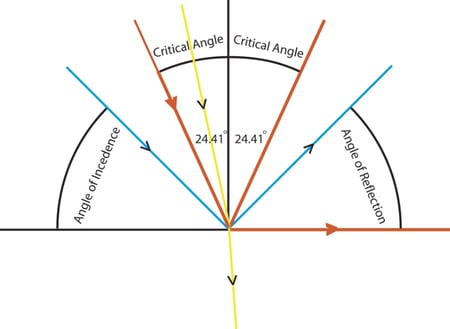
Let us move inside the diamond and see what happens to the light entering and exiting a diamond. In the schematic below, the light beam enters the diamond on the right. The light beam gets reflected on the right side of the pavilion as it is outside the critical angle and again on the opposite side of the pavilion it also gets reflected because the light beam is outside of the critical angle. When it finally reaches the crown, it exits because it is now inside the critical angle.
Join the world's largest B2B diamond trading network >>
 Looking closer:
Looking closer: 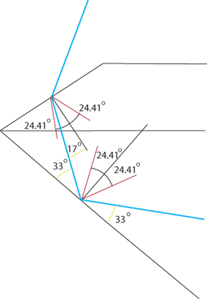
Ideal Cut Diamond
Knowing now how light enters and exits a diamond let us look at the Ideal cut. Light entering through the table on the right side, gets reflected twice and exits again on the left.
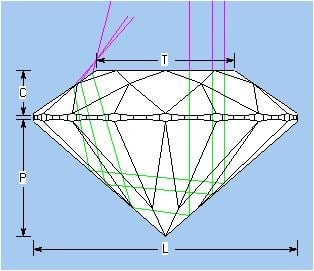
Flat Diamond
As the critical angle for diamond is 24.41, it stands to reason that a pavilion has to be flatter than 24.41 in order for light to exit immediately once it strikes the pavilion for the first time. For that reason I have created two images. The first one is cut with the pavilion girdle facets on 24.40 degrees. Notice that the light exits immediately once it strikes the pavilion.
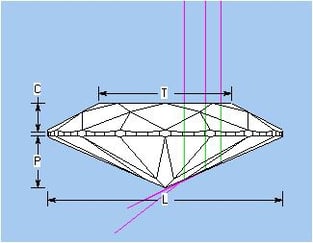
The next image has the pavilion girdle facets on 24.42 degrees. Notice that the two light beams do what they are supposed to do and that is to exit through the crown again. Notice however, that the beams get reflected multiple times until they exit.
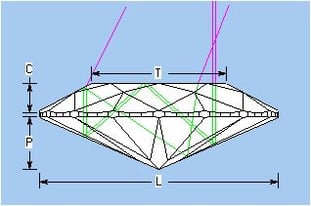
It should be clear by now that any image used by jewelers and diamantaires that do not have pavilion with an angle as low as 24.4 degrees is misleading. Please note that I am not talking about the 'fish eye' effect. That is a different discussion altogether.
Steep Diamond
Following are two extreme examples of steep diamonds to show how steep they must really be to be used in a simplistic example.
In this example the pavilion girdle facets were cut on 51.87 degrees. At this angle the light exits on the pavilion.
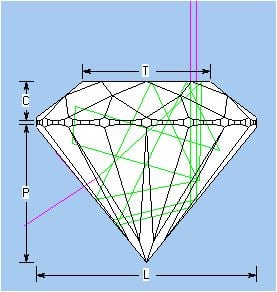
In the following example the pavilion girdle facets were cut on 51.86 degrees. At this angle the light exits through the crown.
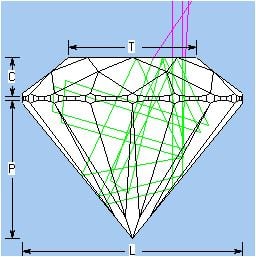
Conclusion
To correctly illustrate the principles of light leakage in flat and steep diamonds, the images have to be really flat (24.4 degrees) and really steep (51.87 degrees).


 RapNet Blog
RapNet Blog





